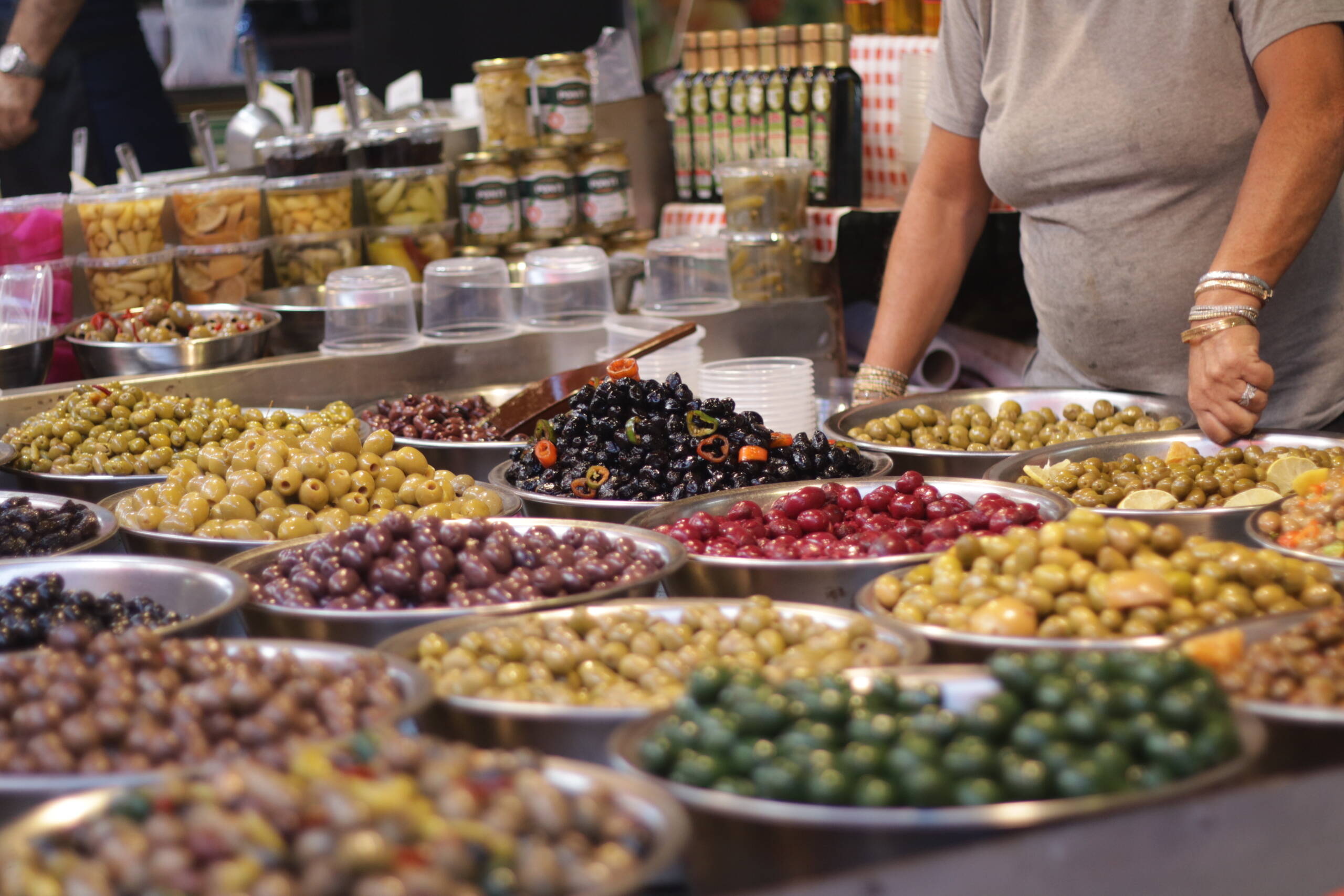A photograph of olives in a bustling market might look, at first, like a simple still life of food. But step back, and it becomes something much deeper: a snapshot of culture, trade, and human history captured in bowls of color. The vendor’s hand resting near the trays, her bangles glinting against the soft light, adds a human layer that turns the scene into a story of exchange and tradition. Each bowl contains olives of different shades—green, purple, black, ruby-red, glossy or matte—testifying to centuries of cultivation techniques and culinary customs. These are not just ingredients; they are artifacts of regional identity, recipes passed down, and tastes shaped by geography and migration.

Food photography, when framed in this way, becomes cultural anthropology. It is not just about capturing how appetizing an olive looks in focus, but about reading the arrangement of foods as texts of culture. Why are chilies mixed in with black olives? Because spicing traditions travelled through caravans and conquests. Why so many colors of olives? Because communities valued diversity in flavor and preservation—salted, brined, or marinated with lemon and garlic. Even the jars stacked behind the vendor and the plastic cups waiting to be filled tell us about the interplay of tradition and modernity: artisanal goods sold in an age of convenience. The image becomes an archive of a living economy, a reflection of how markets operate as cultural crossroads.
In markets like these, photography documents more than products; it captures rituals. The act of tasting an olive before buying, the rhythm of bargaining, the repetition of gestures as vendors scoop, arrange, refill, and weigh—all these are performances passed down for generations. By freezing such moments, food photography reveals anthropology’s essence: the study of everyday life. Unlike polished studio shots of cuisine, these candid market images preserve authenticity, allowing us to see food not as an isolated product, but as part of a social fabric where memory, migration, and identity all converge.
That is why an image like this matters. A tray of olives becomes a portal to understanding Mediterranean trade routes, Ottoman legacies, Jewish and Arab culinary contributions, and the way global tastes are continuously reshaped in local stalls. A camera becomes the anthropologist’s notebook, turning each click into a record of how humans relate to food, and through it, to one another.
Leave a Reply